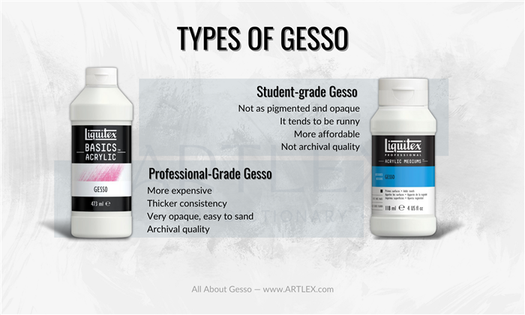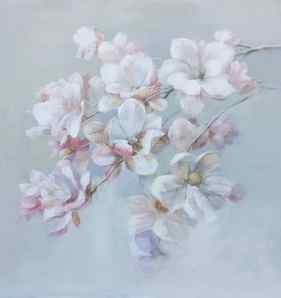Keep pests at bay by storing your artwork in a secure dry place, preferably in airtight containers. These simple tips will help you safeguard your art legacy and ensure the preservation of your artistic talent for generations to come.
Protect Your Artwork: Secure Your Studio & Storage

Recent events have us thinking about the importance of safeguarding our artwork. When natural disasters hit our studios, it can be disastrous. There’s only so much protecting we can do when a level 10 earthquake shakes or category 5 hurricane drops – hence the importance of digitizing your work (see below). But, we should not forget about the smaller, more common hazards to our work.
You spent hundreds of hours crafting your works; take some time to secure your works so that your creative effort was not wasted. We have a few tips to help keep your artwork protected and preserved.
Tips to Help Keep Your Artwork Protected and Preserved
- Put your works on wooden pallets to keep them off of the ground. This will protect them from flooding caused by rainfall or burst pipes.
- Protect works from above too. Cover your art with heavy plastic or scrap carpeting; wrap it completely to protect from the elements above and below.
- Never store your work near windows, doors, vents or ceiling fans. That being said, you want your storage unit or studio to have ventilation. Condensation forms when cool air meets moisture, and it destroys paintings.
- Keep the temperature of your studio or storage unit between 65 and 85 degrees Fahrenheit to avoid fading, cracking and chipping. This keeps both your works and your art supplies safe.
- Store three-dimensional works on padded metal shelving and place the heaviest works on the bottom shelves. Make sure the bottom shelves are elevated from the floor.
- Secure those shelves to the wall and/or floor. Why? Unsecure shelves fall during earthquakes or float away during floods.
If you live in a place where earthquakes are possible, add a rope or other barrier to keep items from vibrating off of shelves.
Secure works on display with museum wax to keep them from vibrating off of the shelves. Museum gel (typically used for glass secured on glass) can be used as well. - Store paintings in vertical storage bins with barriers between artworks, preferably acid-free materials.
- If you have to stack your artworks, place corrugated cardboard barriers between artwork and stack work front-to-back and back-to-back. Please don’t stack unframed art in this way; you don’t want paper/canvas making contact with other works, and weight on corners can puncture the work.
- Digitize your work! Photograph and inventory your works. You’ll want a record in case those works are destroyed. We hope that NEVER happens to you.
- The same goes for recording your material supplies. In the unfortunate event you need records for insurance, you’ll have them at your ready.
- CERF+’s Studio Inspection Safety Checklist https://cerfplus.org/wp-content/uploads/CERF-Studio-Inspection-for-Safety-Checklist.pdf
- Materials Information and Technical Resources for Artists (MITRA)- https://www.artcons.udel.edu/mitra
- Art Storage System- https://youtu.be/C6duggCsHmA
- Art Storage Guide for Printed Matter and Paintings- https://www.usaoncanvas.com/include/guide_art_storage.php
- Emergency Treatment of Water-Damaged Paintings on Canvas- http://canada.pch.gc.ca/eng/1439925170474
- Fire Safety for Artists – https://vlaa.org/fire-safety-for-artists/
Now go protect your work and rest easy tonight!
Written by Elysian Koglmeier
Understand the importance of preservation.
Safeguarding your artistic legacy should be a top priority for any artist. Your work is your legacy, and it’s crucial to ensure that it endures long after you’re gone.
The importance of preservation cannot be overstated. From the moment you complete a piece of art, it begins to deteriorate.
Exposure to light, humidity, temperature fluctuations, and physical damage can all take their toll on your work. But preserving your art is about more than just protection.
It’s about ensuring that your vision and creative spirit continue to inspire future generations. So how do you do it? Start by understanding the importance of preservation.
It’s not just a matter of putting your work in a drawer and forgetting about it. Preservation requires knowledge and care.
You need to understand the materials you’re using, how they degrade, and how to protect them. You need to consider the environment in which your art will be stored and take steps to mitigate any potential harm.
And you need to be aware of the various preservation techniques available to you, from framing to conservation treatment. In short, you need to be proactive, diligent, and informed.
But the rewards are immeasurable. Protecting your art ensures that your voice will continue to be heard, your vision will continue to be seen, and your legacy will continue to inspire.
Choose materials wisely.
Protecting your art collection is a crucial task for any artist, collector, or enthusiast. From oils to watercolors, pastels to acrylics, each medium requires unique preservation practices.
Choosing the right materials is a pivotal factor in safeguarding your artist’s legacy, which is why it’s essential to invest in high-quality, archival materials. For instance, if you’re using oil paintings, select linen or cotton canvases that are pre-primed with acid-free gesso, as this will protect the canvas and prevent it from deteriorating over time.
Be mindful of the quality of the paints and pigments you use as well. Cheap or low-quality paints may contain additives that fade or discolor with time, leading to irreversible damage to your artwork.
Store your artwork properly too; avoid exposing it to direct sunlight, extreme temperatures, or humidity. One must also consider the framing options while preserving their art; investing in UV-resistant glass or acrylic frames can significantly increase the longevity of your artwork.
Don’t forget to label your artwork and keep a detailed inventory. In short, ensuring that you’ve chosen the best quality materials and storage options is crucial in protecting your art collection and preserving your artistic legacy for generations to come.
Store artwork properly.
When it comes to art, preserving it truly means extending its longevity and lifetime value. Whether you are an aspiring artist or an experienced one, safeguarding your artistic legacy means ensuring that your artwork stays in optimal condition for decades, or even centuries, to come.
Proper storage is an essential aspect of this laborious process, and you must invest in long-term art storage solutions to protect your artwork from environmental factors, pests, and other uncertainties. There’s a lot to consider when it comes to storing artwork properly, but it all starts with selecting the right storage method.
Many artists may be tempted to store their artwork in attics or basements, but these locations are usually prone to dampness and humidity, which can cause mold and mildew to grow on canvases or paper. Instead, consider investing in climate-controlled storage units that have temperature and humidity controls to prevent any moisture-related damage.
Next, you must ensure that your artwork is wrapped or packaged correctly before storage. Use acid-free tissue paper or glassine paper to wrap each artwork piece before placing them in an acid-free cardboard box.
Avoid using plastic or bubble wrap, as they may have chemicals that can cause irreversible damage to your artwork. When it’s finally time to store your artwork, don’t stack them on top of each other.
Instead, keep the artwork lying flat in the cardboard box and separate it from other art pieces using acid-free cardboard partitions. Additionally, avoid placing any heavy objects on top of the boxes, as they can potentially damage the artwork.
Finally, it’s important to regularly monitor the artwork’s condition, even when it’s in storage. Check for any signs of pests, mold, or mildew, and immediately consult an expert for guidance on how to address the issue.
By following these essential tips and investing in proper long-term art storage solutions, you’ll be able to guarantee the longevity and safety of your artistic legacy.



